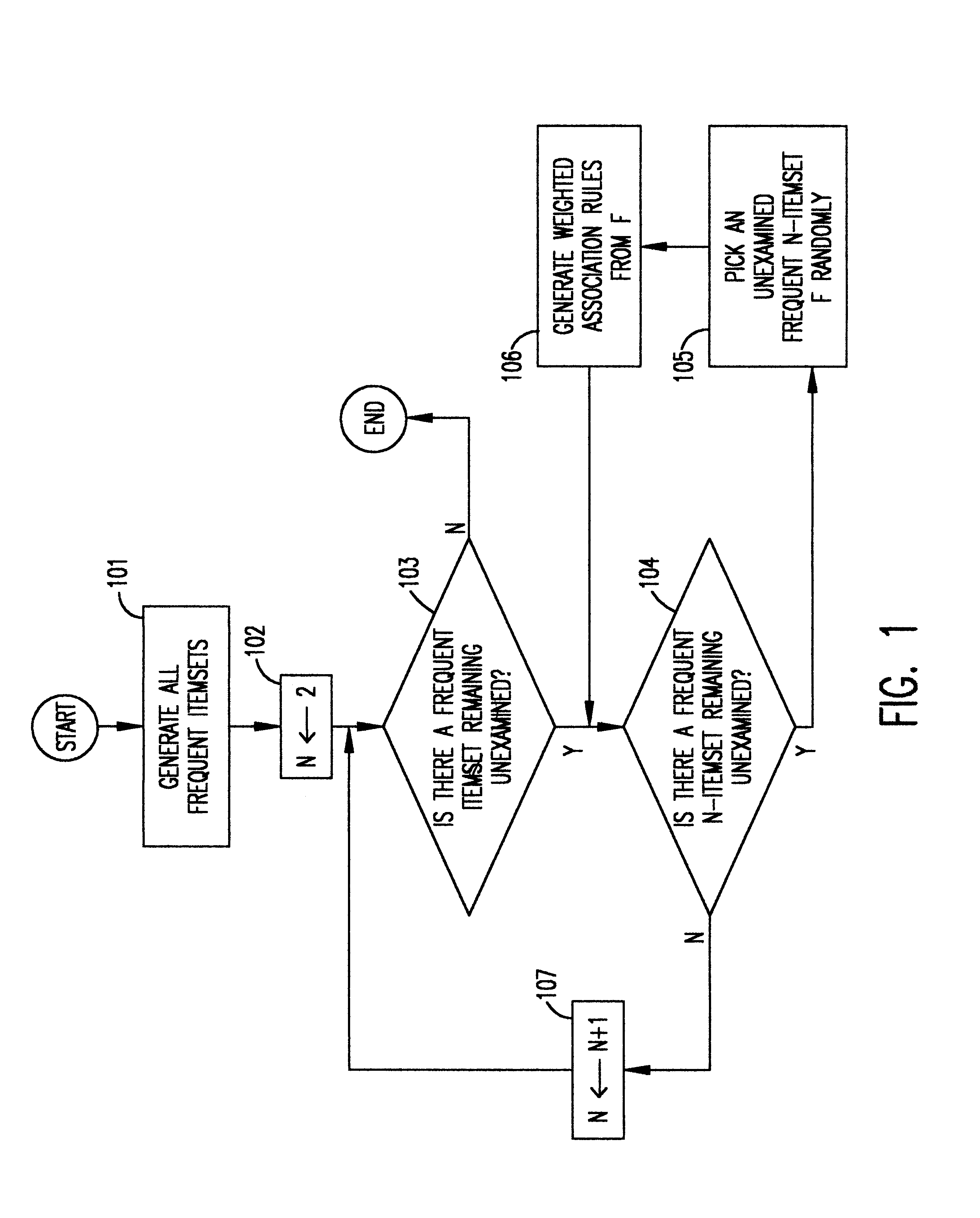Method and system for mining weighted association rule
a mining association and weighted association technology, applied in the field of data mining, can solve the problems of unmanageable number of mapped binary attributes, weak purchase tendency of soda, and loss of some vital information
- Summary
- Abstract
- Description
- Claims
- Application Information
AI Technical Summary
Benefits of technology
Problems solved by technology
Method used
Image
Examples
Embodiment Construction
Referring now to the drawings, and more particularly to FIG. 1, there is shown the overall process of mining weighted association rules (WARs) in this invention. First, all frequent itemsets are generated from the given set of transactions in function block 101. Referring now to FIG. 9, there is shown the frequent itemset mining process. This process is first introduced in R. Agrawal, T. Imielinski and A. Swami, "Mining association rules between set of items in large databases", supra. Let C1 be the candidate set of 1-itemset which contains only a single item in function block 901. Also, initialize j to be 1. If C.sub.j is not empty, as determined in decision block 902, the support is collected for each itemset in C.sub.j in function block 903. If there are any itemsets whose support is larger than the support threshold, these itemsets are put into L.sub.j in function block 904. Based on L.sub.j, C.sub.j+1 is constructed in function block 905 as follows. A itemset with j+1 items is ...
PUM
 Login to View More
Login to View More Abstract
Description
Claims
Application Information
 Login to View More
Login to View More - R&D
- Intellectual Property
- Life Sciences
- Materials
- Tech Scout
- Unparalleled Data Quality
- Higher Quality Content
- 60% Fewer Hallucinations
Browse by: Latest US Patents, China's latest patents, Technical Efficacy Thesaurus, Application Domain, Technology Topic, Popular Technical Reports.
© 2025 PatSnap. All rights reserved.Legal|Privacy policy|Modern Slavery Act Transparency Statement|Sitemap|About US| Contact US: help@patsnap.com



